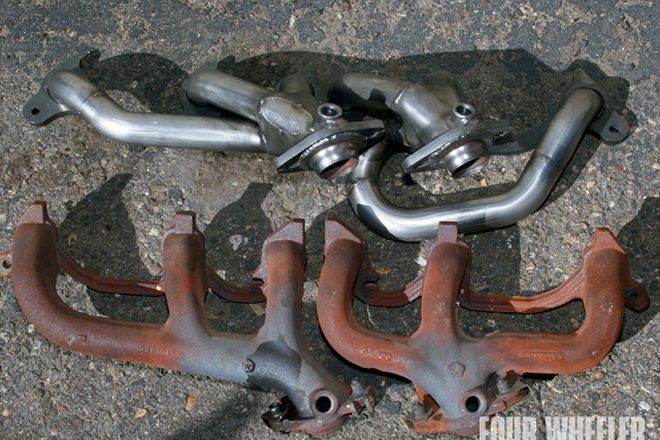
Upon adding 33-inch-tall tires, a flexy long-arm suspension system, and enough camping essentials to forget home while on the trail, our donor's '05 Jeep Rubicon Unlimited felt a bit on the sluggish side. The 4.0L powerplant struggled with even slight hills at highway speed. We knew his stock axles were in dire need of a regear, but like many readers in this scenario, we thought we could skate around the costly ring-and-pinion swap by simply bolting on a few known power adders. At the same time we figured it would be a great opportunity to quantify some real-world results via a chassis dyno.
First, we added a JBA Cat4Ward header to promote exhaust flow. Next, we bolted on an Airaid throttle-body spacer to achieve optimal fuel-to-air mixing. Finally, we added a cold-air intake setup, also by Airaid, to help aid the engine in restriction-free breathing. Follow along as we highlight the process of powering up the trusty Jeep 4.0L.
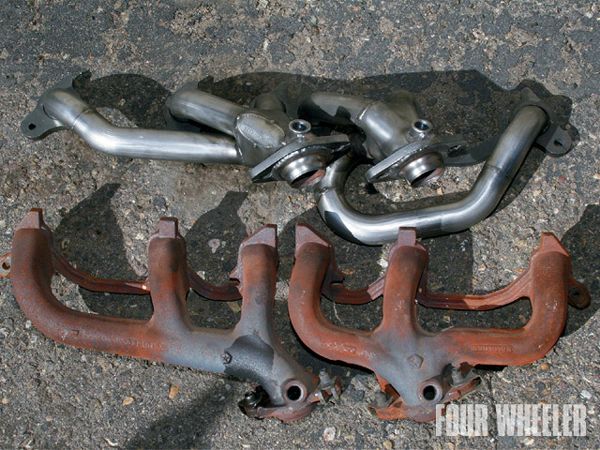
5. This photo shows the factory exhaust manifold next to the new JBA header. It's easy to see how the JBA header is able to improve performance over the factory manifold; the gases from each cylinder combine together at the same point, allowing the increased size at the collector to promote more even flow. The factory part dumps gases from one cylinder into another prior to the collector; this causes spikes in exhaust pressure and temperature. Notice the area of the factory manifold that didn't seem to rust. This is because that particular area runs consistently hotter than the rest of the manifold; this uneven heat distribution causes warping, cracking, and eventually failure.
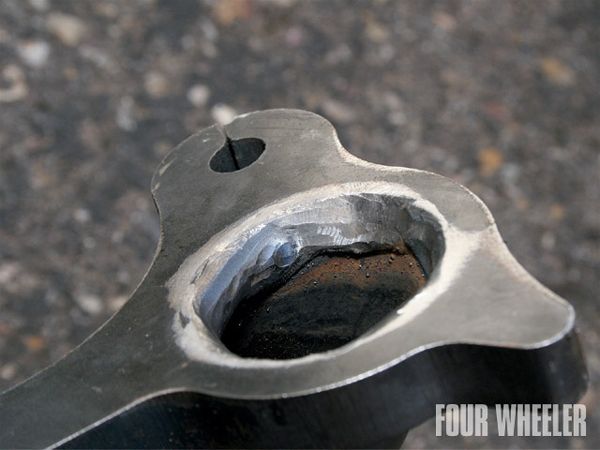
6. Check out the 1/2-inch-thick laser-cut head flange. Not only does this protect the head interface from leaks, but it also ensures that the individual pipes have plenty of weld surface to help the unit stay intact for years to come. During construction, after each pipe is welded in place, a technician goes through and ports each hole with a grinder to make sure each opening meets a minimum flow dimension. Markings show exactly where weld material was removed from this particular port during construction. This critical attention to detail is one of the many reasons we like JBA headers.
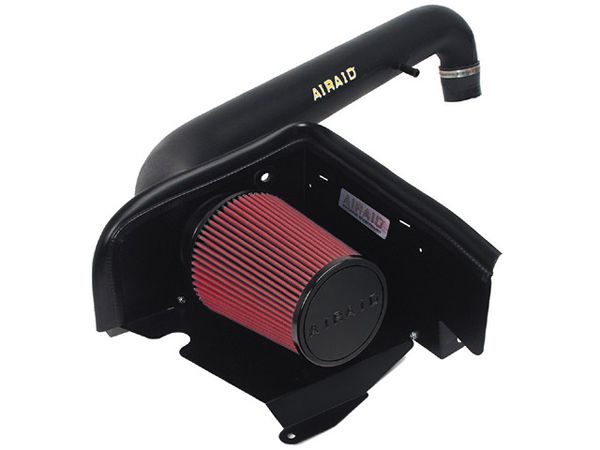
9. Airaid's intake systems are computer designed to provide maximum airflow, which means more horsepower, torque, and improved fuel efficiency. By utilizing computer-aided design, Airaid intake systems offer superb fit and finish. We also like the fact that these systems come with a lifetime warranty. All Airaid filters use a synthetic filtration media called SynthaFlow, a synthetic nano-fiber material that traps even the smallest of dirt particles. These filters are constructed using a hand-poured urethane body that won't crack, curl, or shrink like other rubber or plastisol units. These filters are 100-percent washable, reusable, and feature a lifetime "no-hassle" warranty. Each system comes ready to install with all necessary fasteners and brackets.
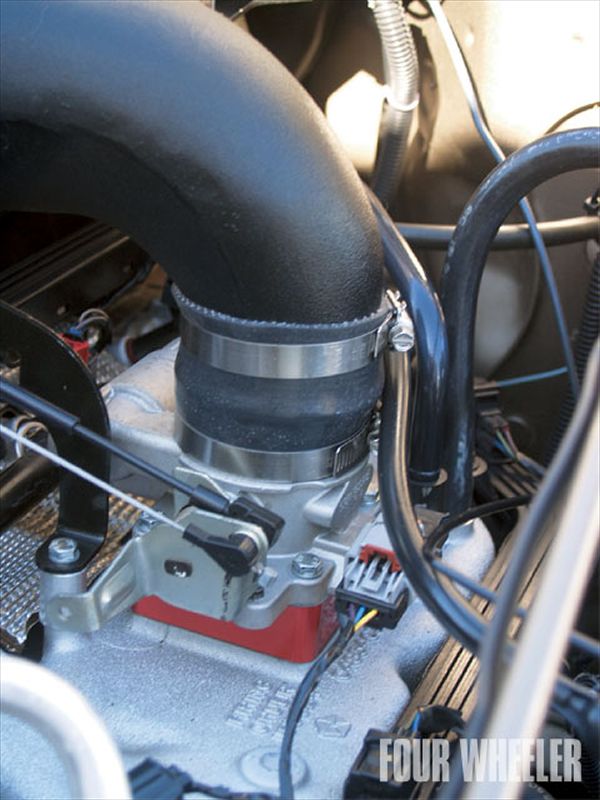
14. The PowerAid is essentially a throttle-body spacer. It was developed to enhance your vehicle's off-idle to mid-range performance and efficiency. The helix-bore design promotes a spinning action of the incoming air. As air passes through your throttle body, this helical effect causes the air molecules to organize and maintain higher velocity. This is beneficial because it allows better atomization of fuel and air as they enter the combustion chamber. Manufactured from billet 6061-T6 aluminum, each PowerAid is specifically designed for a specific engine application. The kits include all necessary gaskets and hardware. Installation typically takes less than an hour using common handtools.
Dyno Data (Peak HP and Torque)
Stock: 126.4 hp @ 4,474 rpm /176 lb-ft @ 2,385 rpm
Add lift, 33-inch tires, and 17-inch wheels: 122.1 hp @ 4,240 rpm /163 lb-ft @ 3,110 rpm
Add JBA header: 128.6 hp @ 4,335 rpm / 199 lb-ft @ 2,262 rpm
Add Airaid CAI and TBI Spacer: 148.0 hp @ 4,850 rpm / 213 lb-ft @ 2,365 rpm
Total hp improvement over stock: 25.9
It's important to note that the gains we've shown here would likely increase significantly by simply adding a freer-flowing after-cat exhaust system to the equation; however our donor Jeep's owner didn't want to increase exhaust noise at all. We were unable to show off the full potential of the parts we added. However, a 25.9hp gain is still pretty good considering that the restrictive OE exhaust remained intact.
The Cost* JBA Cat4Ward Header $348.95 Airaid CAI $259.99 Airaid PowerAid Spacer $74.99 Price per hp gain $26.40 *(retail prices may vary)







